Traditional Wrestling
Wrestling is an integral Culture of our people. In our wrestling competition, different types of drums are used to motivate the competitors, they are: Ikwirikwu, Ekwenkalu, Ngele, Mbamba. These drums come in different shapes and sizes.
Two competing camps will gather opposite one another with each camp having somebody who motivates their camp to wrestle well. The motivator holds some grasses, which he uses to whip the wrestlers. He whips their hands and backside and that is the activator to start wrestling. Whoever throws the other down, wins.
If they (wrestlers) were unable to throw each other, we say they have equalized or ogba-oga. The side of the wrestlers that throws his opponent will lift him up with utter jubilation.
They will dance round the playground where the wrestling holds. The women break into ecstatic dance. These kinds of activity done by the spectators, arouse the wrestlers.
Wrestling Match
Usually at The Village Square
Wrestler's Chanter
Chants and Praise sings during a traditional Wrestling match.
Did You know?
Costumes
That the fabrics and fashion ideals is a summary of gait, mobility, character, culture and tradition of Rivers State.
EGEREBITE AND BIBITE
IriaorNgbede
“Iria” or “Ngbede” is exclusively a feminine ceremony signifying the maturity of a maiden into womanhood.
This ceremony is proceeded by a fattening process lasting a couple of months or weeks, in which the maiden is shut away from public glare and smeared with palm oil and fed with nutritious dishes.
At the conclusion of the fattening she is decorated with indigo-far body designs, jewellery and corals beads. She is then dressed with layers and layers of expensive fabrics such as damask, popo (Ashanti), velvet, su-u and Akwete (native woven wrapper) in which she dances in public to announce her coming of “AGE”. The ceremony ends the confinement of the said damsel.
Until this ceremony is performed the young Opobo woman is not qualified to join her elders or even the rank of their peers who have done so and cannot therefore be available for the customary rights open to them.
In the past the ceremony proceeded marriage and this is known as “Egerebite”.
Later in life the Opobo woman performs yet another “Iria” ceremony. She ties the indian cloth or wrapper locally called “George. (Bibite) after King George Pepple 1 of Bonny, who introduced this fabric to the Bonny during his reign 1847-1888. This major ceremony was performed by women who had advanced in age, some old enough to be grandmothers or mothers – in – law.
Today, however, young women who perform the first “Iria” (Egerebite) go ahead if the choose and combine the two in a single ceremony. During the ceremony, water pot music is used to allow the woman express her mastery of traditional dance steps. Meanwhile some may employ live band or Nwoatam music which is played with drums.
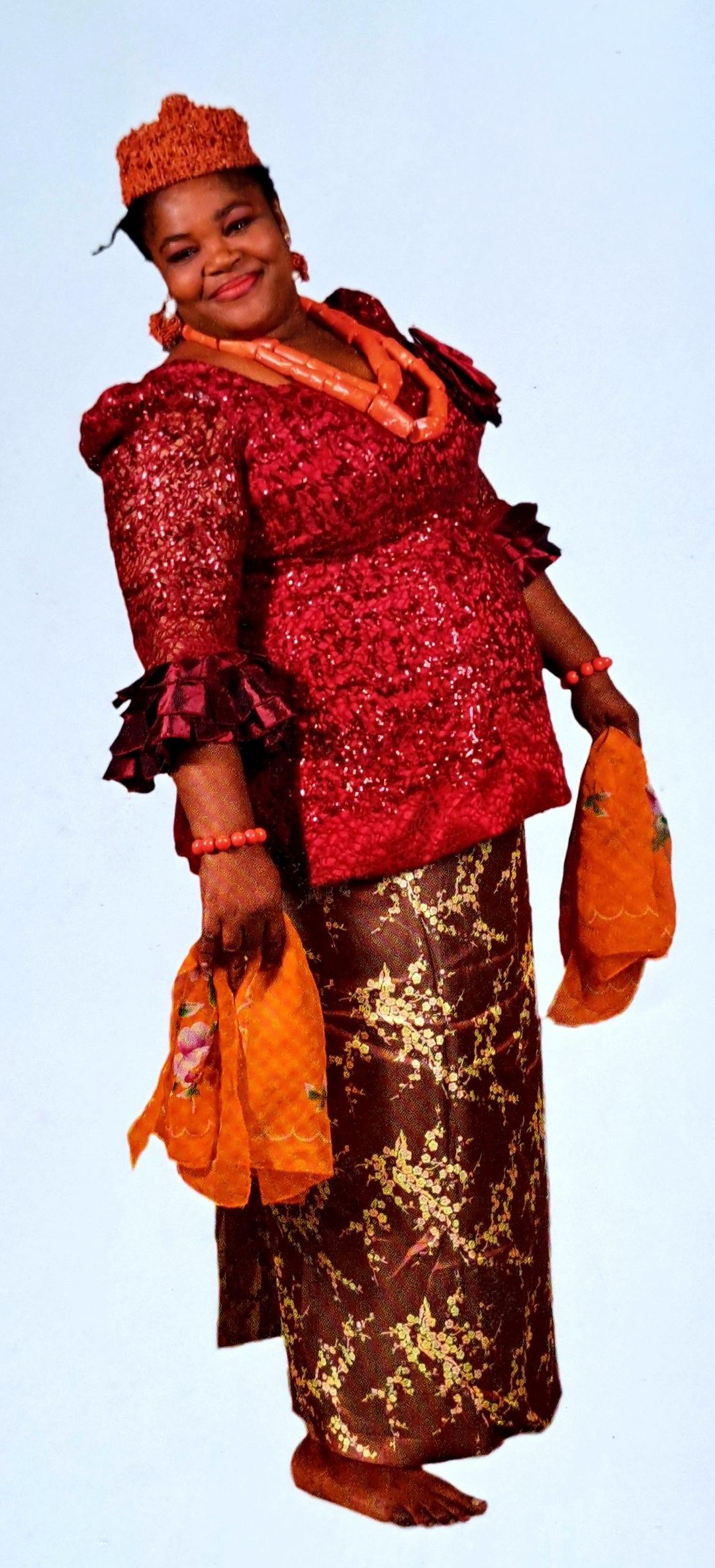
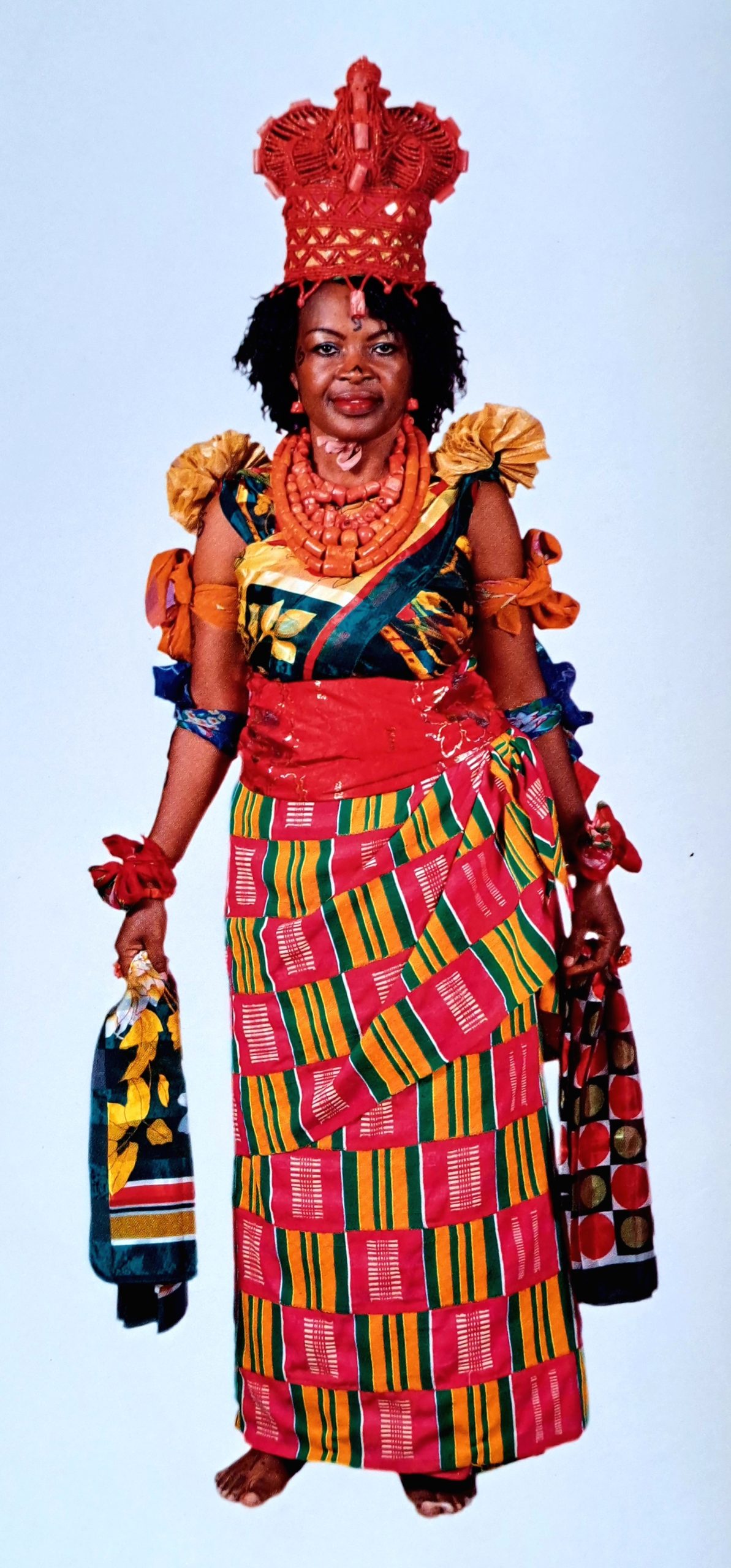

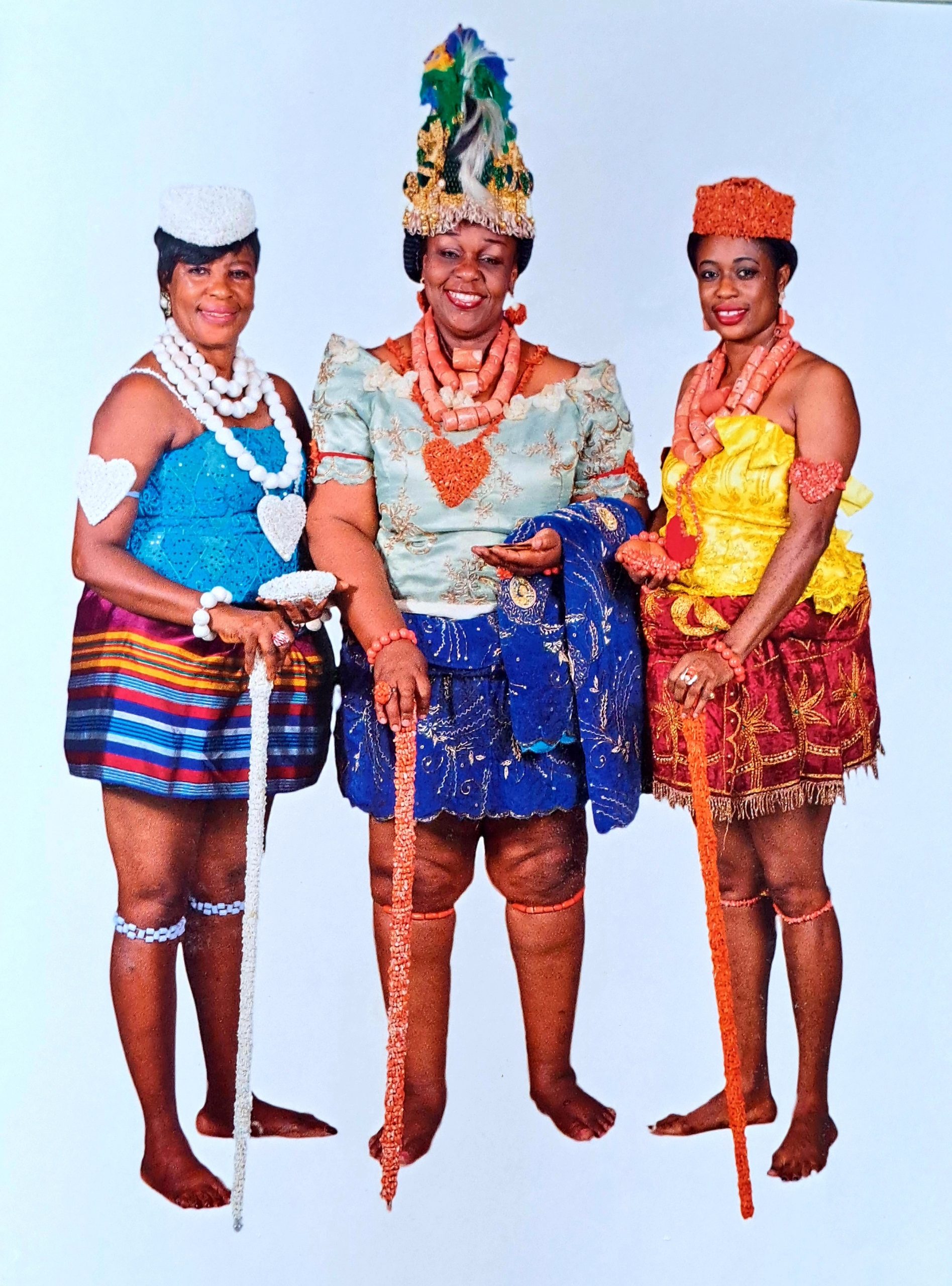
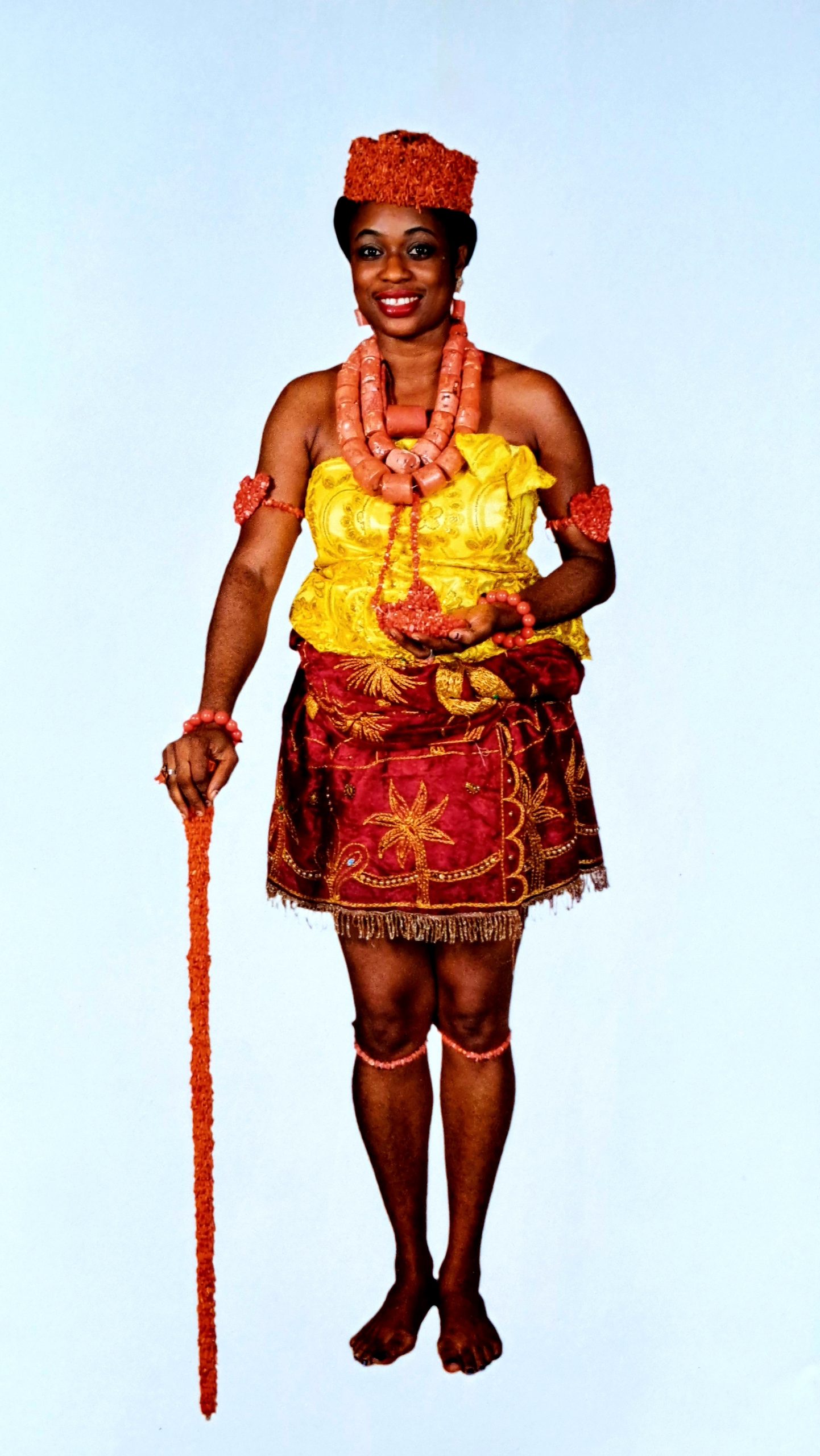
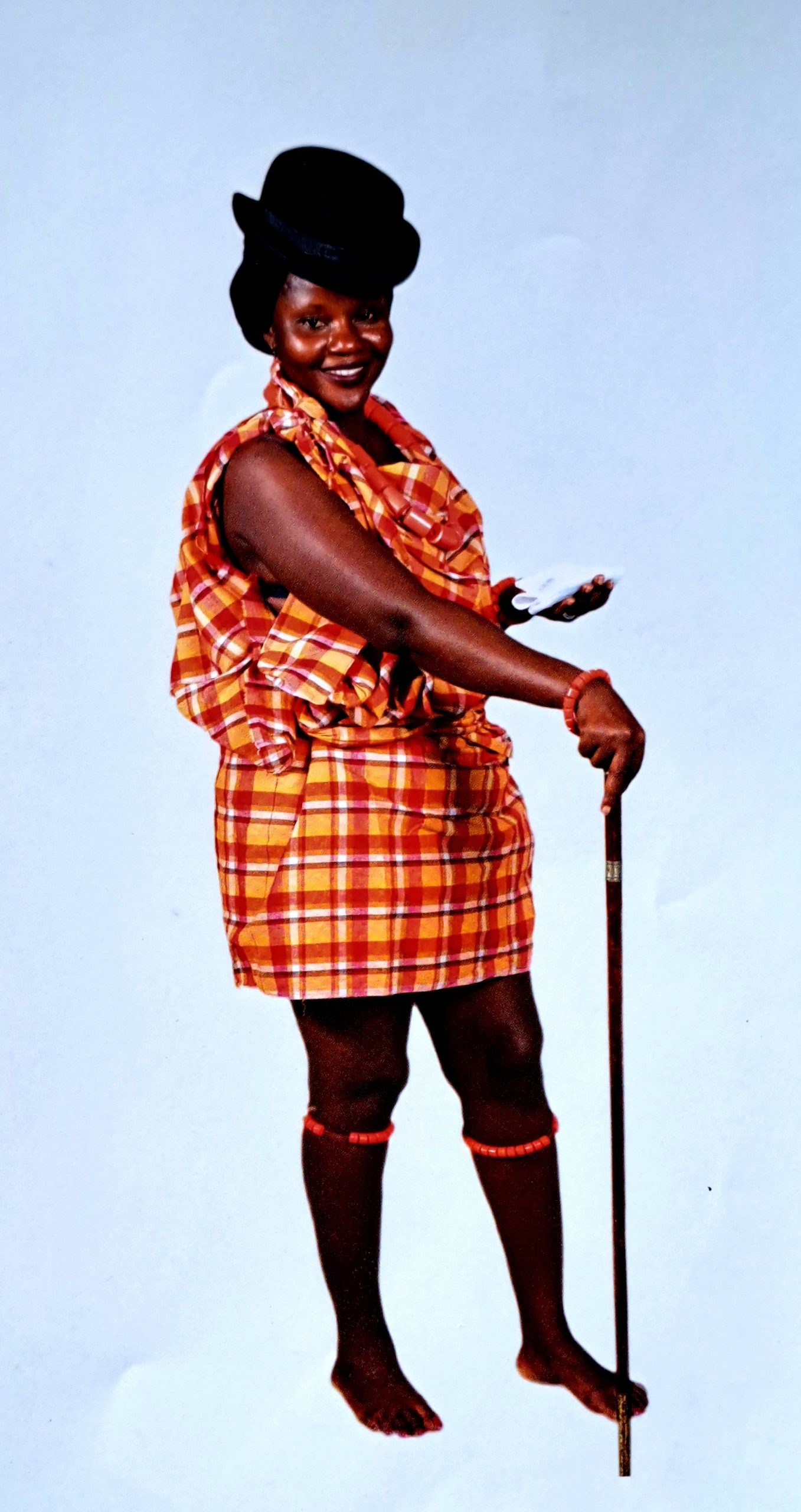
KALABARI IRIA
"Iria" simply means confinement (a traditional ritual as maidens attain puberty)
The Aji lutricate cap decorated with feathers, beads, small mirrors and other ornaments. It is worn by the Iriabos or Alapus during Iria traditional Dance festival by the Kalabari People of Rivers State.
The female on Bowler Hat is called small Iria usually dressed during burial and traditional marriages.
In the Kalabari Region/Kingdom, IRIA formally celebrated period of transition in the females life cycle from late childhood to childbirth. Only two stages of IRIA now survive, “bite sara and Iriabo “sometimes used to show or reflect the prestige of a deceased’s family with their elegant appearance.
Attire of the Kalabari
The Chief Mourner of any deceased, dressed in this special ceremonial robe known as ATTIGTA also in chieftaincy installations.
The male Attire mainly worn by first sons they are the only ones permitted to tie their wrapper (George) with opening at the centre. Sekiapu for men who are respected, these men govern the town alongside the Amanyanabo (king) in the Kalabari town of Rivers State.
Attigta
The Chief Mourner of any deceased, dressed in this special ceremonial robe popular known as ATTIGTA also in chieftaincy installations
Image Accordion #4
Bonny/Opobo Chieftaincy wear
Sekiapu
This is for men who are respected, these men govern the town alongside the Amanyanabo (king) in the Kalabari town of Rivers State.
Male outfit-Woko
Worn By a Male Adult(Groom) During a Traditional Marriage
Etibo&Wrapper
The male Attire mainly worn by first sons at funerals. they are the only ones permitted to tie their wrapper (George) with opening at the centre
Iria Ngiapu (Okrika)
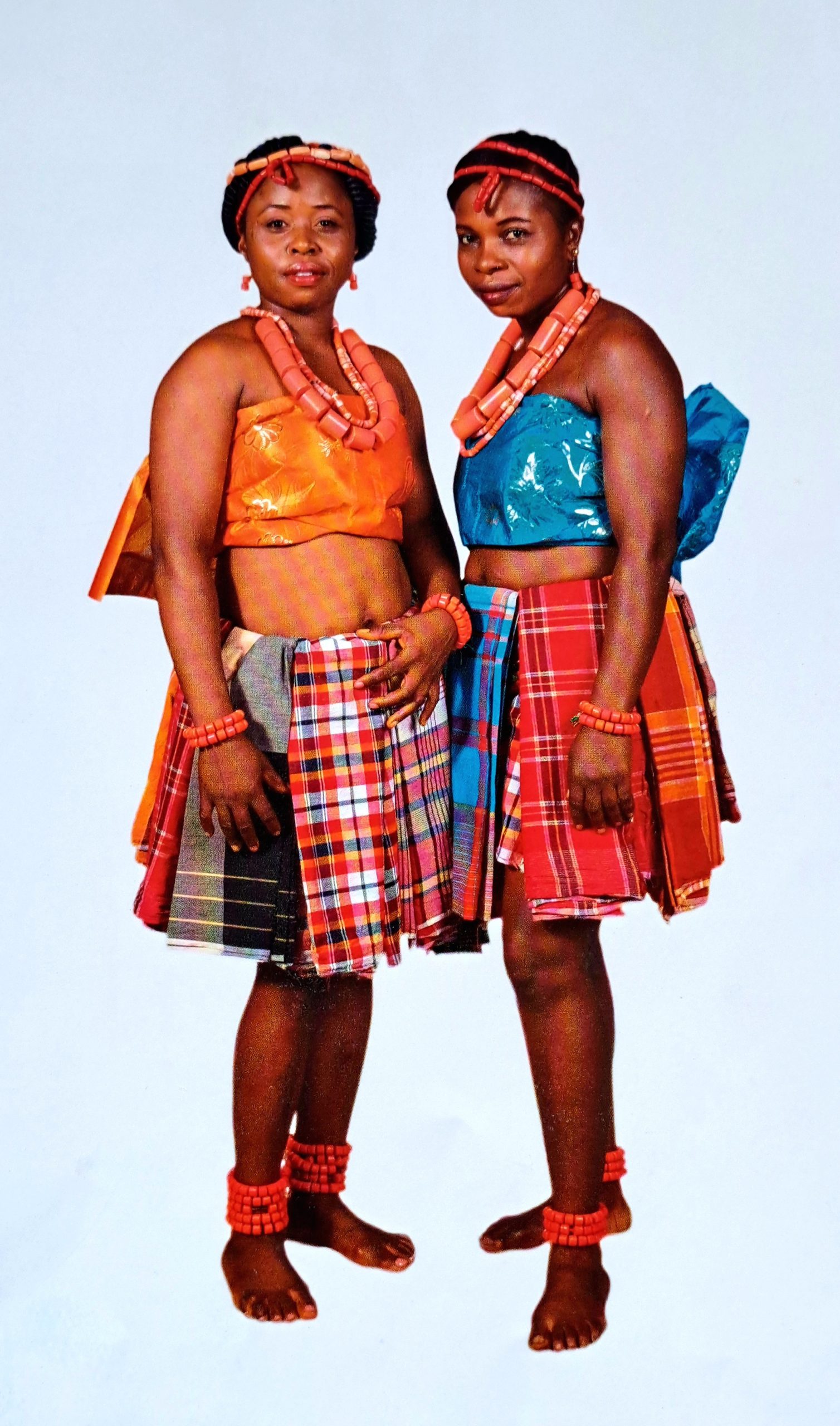
Ogoni Maidens
Ogoni maidens: Wabogo (Ogoni) the main objective of this ceremony is to include chastity on the part of girls until they are duly licensed through this ceremony for marriage.
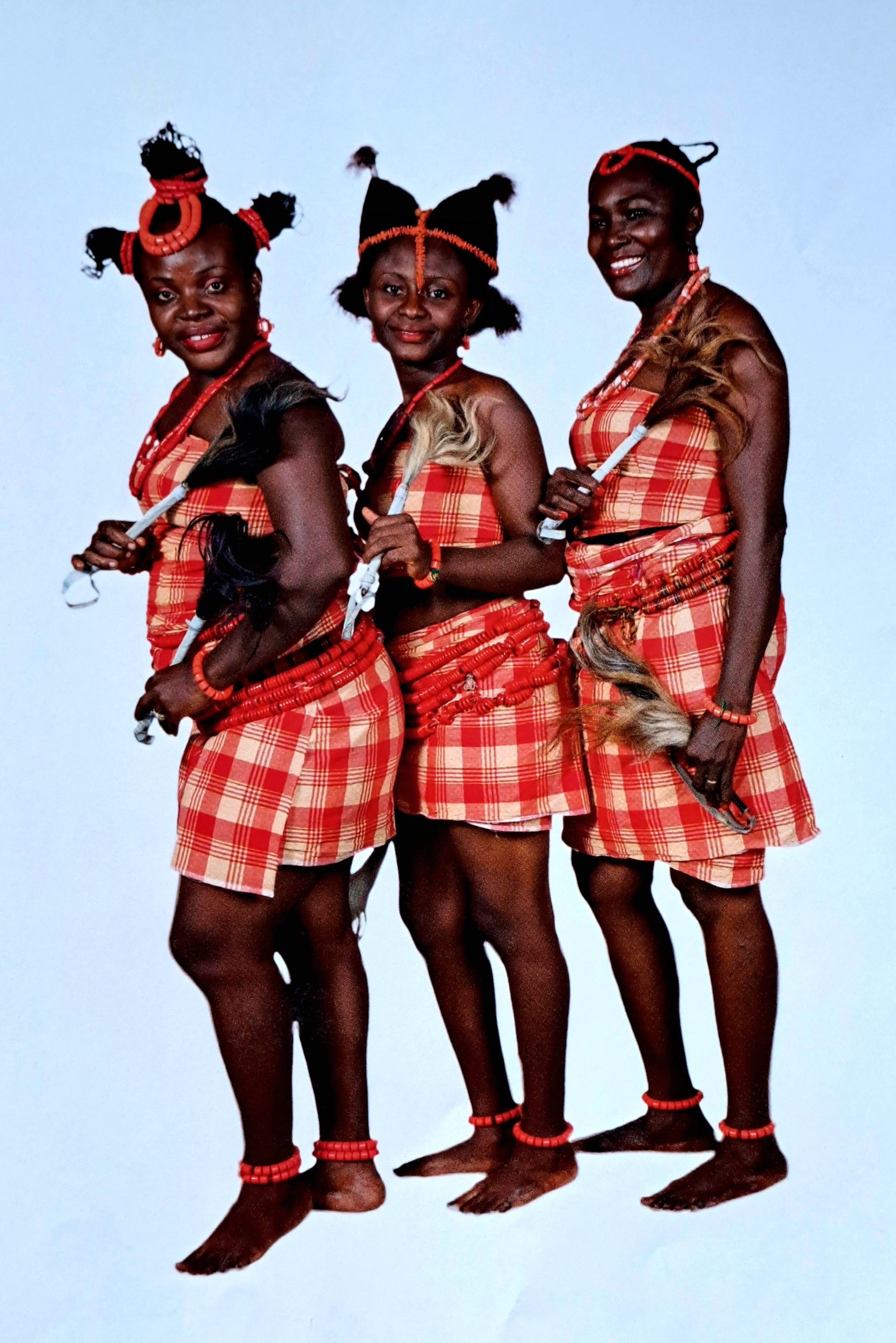
Other Popular Rivers Attire...



Ogoni Maidens
Ogoni maidens: Wabogo (Ogoni) the main objective of this ceremony is to include chastity on the part of girls until they are duly licensed through this ceremony for marriage.
Ogoni Maidens
Ogoni maidens: Wabogo (Ogoni) the main objective of this ceremony is to include chastity on the part of girls until they are duly licensed through this ceremony for marriage.

